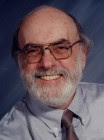 By Arnold Oliver
By Arnold Oliver
Along the rugged coast of northern California’s Humboldt County, maritime history is being made. June 20th marked the launch ceremony of the rebuilt sailing ketch, the Golden Rule, after four years of hard work by a restoration team led by Veterans for Peace. As we shall see, the Golden Rule is no ordinary sailboat.
If you are old enough, you may recall that in the 1950’s, the U.S. military used the Marshall Islands as the primary site for its atmospheric nuclear weapons testing. As is now known, those huge nuclear detonations in the Western Pacific were wreaking havoc on the environment and human health. In fact, with each monstrous explosion, readily detectable clouds of radioactive fallout wafted around the planet, and contamination began to turn up in cows’ and mothers’ milk. Increasingly, skepticism grew about government assurances that there was no danger.
Then, in 1958, the Golden Rule arrived on the scene. The Hugh Angelman-designed 30-foot ketch was purchased by a group of activists who soon set out on a voyage of nonviolent protest toward the Marshalls. Their plan, which was well publicized, was to sail into the target zone and sacrifice both boat and crew if need be to bring a halt to the tests.
The Golden Rule and its crew never made it to their destination. The Coast Guard stopped the vessel in Hawaii and arrested everybody on board. But the publicity surrounding the crew’s trial and imprisonment helped ignite worldwide public outrage against atmospheric testing.
That outrage turned the tide. By 1963, the United States, the Soviet Union, and the United Kingdom signed the Partial Nuclear Test Ban Treaty, which banned nuclear tests in the atmosphere, underwater, and outer space. No nuclear tests took place in the Marshall Islands after 1958.
Just as importantly, the use of nonviolent direct action as a fundamental guiding principle of the Golden Rule’s crew would also influence future generations of activists, as would their abiding respect for the humanity and dignity of those with whom they disagreed. The seas of the world have never been quite the same since.
The Golden Rule fired the imagination of a generation, and was the forebear of the many peace and environmental protest boats that followed, from New Zealand’s Vega, to the Australian Pacific Peacemaker, to the Sea Shepherds and Free Gaza flotillas.
The connection to Greenpeace is direct. In 1971, Golden Rule supporter Marie Bohlen attended a meeting in Vancouver, Canada of people concerned about nuclear weapons testing. She suggested a voyage toward the U.S. nuclear test site in the Aleutian Islands á la the Golden Rule. Soon, the rusty trawler Phyllis Cormack was renamed the Greenpeace and headed north toward the Alaskan Archipelago. The rest, as they say, is history.
Sadly, after the 1958 voyage, the Golden Rule was sold and slipped from public view. The ship wound up in Humboldt Bay, California, badly neglected. She finally sank in a storm in late 2010.
When a group of Northern California members of Veterans for Peace learned the damaged ketch was nearby and might be salvageable, they leaped at the chance to raise the vessel from the depths and restore it to its former peacemaking glory.
In large measure, the purpose of the rebuild of the Golden Rule is to honor the original crew. They stood firm for peace and nonviolence before it became fashionable. Two of them, Albert Bigelow and James Peck, later were among the original 13 Freedom Riders in 1961 in the American South.
The other crew members were equally noteworthy. One led United Nations development programs, and another became a founder of Peace Brigades International.
The team that has rebuilt the Golden Rule is honored to carry on this legacy by bringing the feisty little ketch back to life. While sponsored by Veterans for Peace, the Golden Rule Project brings together an eclectic mix of historic boat lovers, environmentalists, peace and religious activists, and progressives. It’s open to anyone interested in working to keep the boat sailing and promote its mission.
Now that the re-build is complete, the Golden Rule will soon ride the waves as a living museum and floating classroom. Her crews will educate future generations on the risks of nuclear technology, the importance of the ocean environment, and above all, the power of peacemaking.Φ
Arnold “Skip†Oliver, syndicated by PeaceVoice, is Professor Emeritus of Political Science at Heidelberg University in Tiffin, Ohio. Visit VFPGoldenRuleProject.org for more information.
